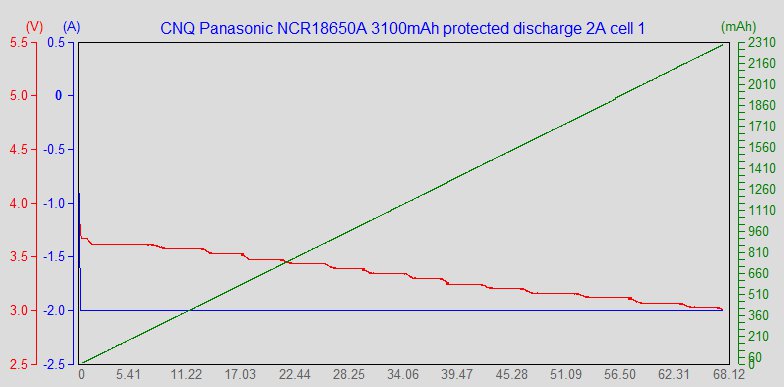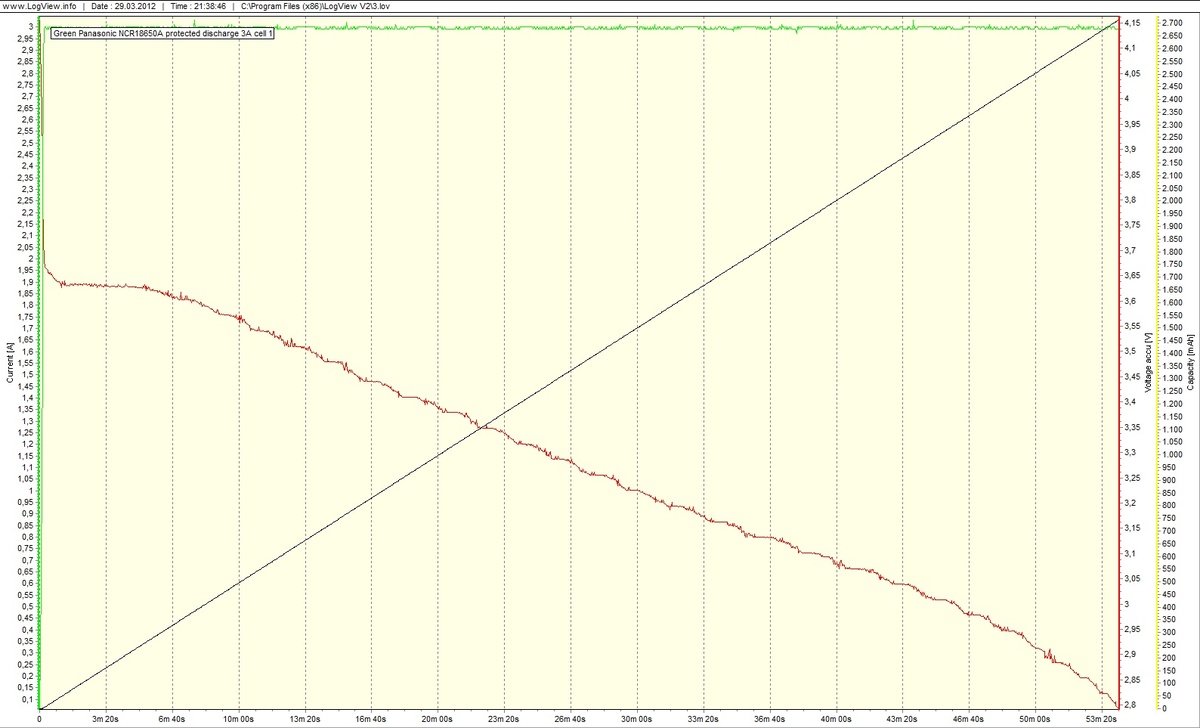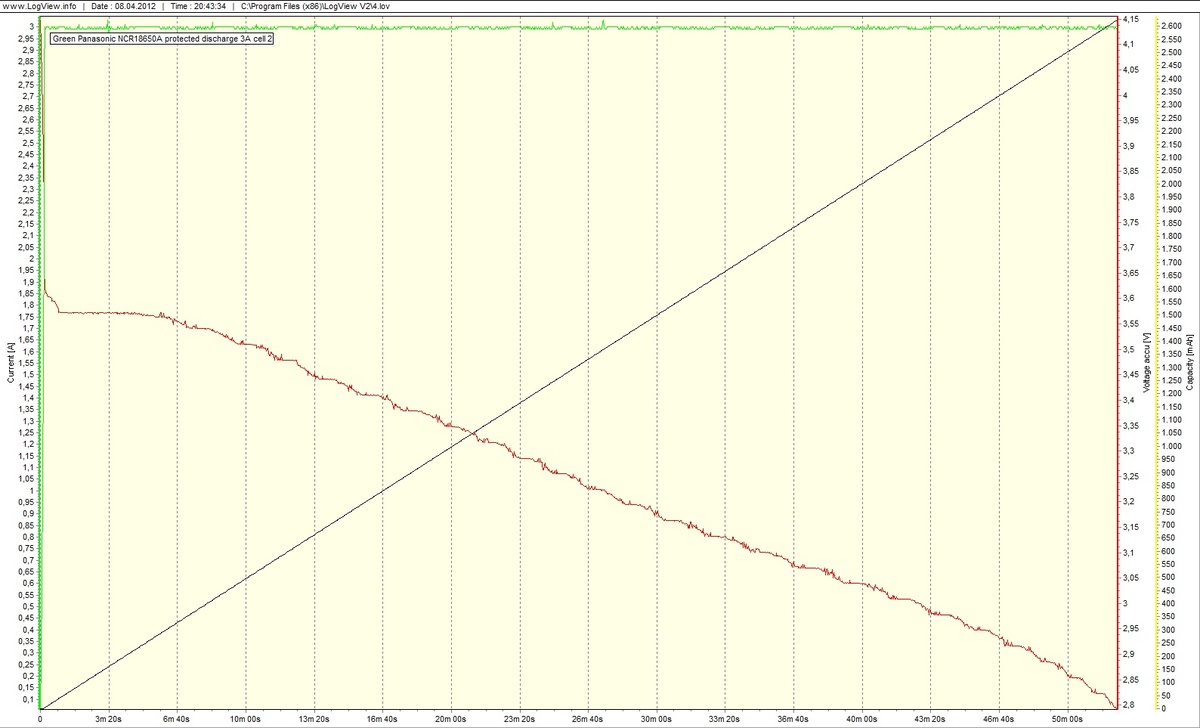45mOhm could be the resistance of just the protection pcb.
But you are right, it's useless to claim this would be the total resistance of the protected cell.
45mOhm could be the resistance of just the protection pcb.
But you are right, it's useless to claim this would be the total resistance of the protected cell.
From my tests, I believe the unprotected 2900mah panasonics to be genuine. They do seem to bulge out very slightly in the middle, though.
Flashlights are only a realy small niche for li-ion batteries. Most of them are build for laptops and nowadays for e-bikes. They need unprotected and Panasonic, Sanyo, Sony, LG etc. built them.
AW, Redilast, Xtar and other brands build a protection and wrapped.
I think the Focal, BIC Sanyo and Panasonic batteries are genuine (the MarsFire have only the wrong mAh in the titel and the description). Manafont sell them, too (they do not name mAh):
@ada-potato:
2 weeks aren't slow for a asian shop - it's fast. With dealextreme or kaidomain you offen have to wait 4 weeks.
Here is the 2A discharge curve for the first cell:

The charger monitor programm unfortunately crashed while discharging the second cell. So there is just a picture of the charger display. I twas discharged with 2A too:

The cells did match pretty good. But I think you have to discharge them down to 2,5V to get better mAh results.
I'm digging the clear re-wrap.
I like that too. It's cool to clearly see the used cell.
Looks good - May pickup few.
How is the wrapper compared to TF flames?
That discharge does not look right for a fully charged NCR18650A cell, at 3 volt I would expect around 2600 mAh with 2A discharge.
That is what I got for all NCR18650A batteries I has tested. The problem can be either the battery, the charger or the discharger.
I know your excellent battery tests. :)
I expected the difference of roughly 500mAh to be the result of not discharging them to 2.8v but to 3v.
But it might be a combination of the charger not charging them to 100% and showing a little to low results in discharging. So take the above discharge with a grain of salt.
I will get a better charger and we'll see. You can't do anything wrong with an iCharger 206B, right?
As you can see on my 3V bar chart the capacity must be around 2600mAh at 3 volt discharge, this is 500mAh less than the full 3100 mAh rated capacity.
You could check the charger with a known NCR18650A battery (if you have one) or with a voltmeter and ammeter.
iCharger is good, but you might still have to check the calibration.
I've got two NCR18650A from intl-outdoor.com but did not discharge those with 2A yet.
Just bought an iCharger 206B with calibration to <4mV.
Did not like my old hobby charger as it's monitor program crashed sometimes and it terminated the charge with an connection error all the time.
My set of batteries arrived yesterday. The good part I found was that they were genuine batteries with clear wrap and apperantly a PCB. The Kapton (or similar) tape and a bar under it runs from tail to head. The bad thing about these batteries were that they had stickers all around it. Had to remove the stickers with some penetrating oil to let them in some tightly fit bodies.
Anyway, I charged one with my XTAR WP2 II charger and made a discharge test with my Accucel 6 hobby charger @ 1A, the max current I could set. I must state here that I uses magnets for connection but they were between the clippers so the clipper could touch the battery directly. Therefore, having a small amount of connection resistance added to the circuit I set my Accucel 6 to NiMH discharge mode and down to a voltage of 2.3V.
The cell measured 3034mAh and the final voltage the charger reads were 2.3V. I didn't have a DMM with me but tried a second discharge cycle at 0.1A and the voltage was back at 3V.
My conclusion,
1. They are really above 3000 mAh, built well and has strong metal tabs at the both poles.
2. The circuit didn't seem to have cut at 3V on my sample
3. The circuit didn't seem to have cut at 2.5V either, but with some inline resistance the real voltage on the cell could be higher.
4. I still don't know if the circuit really works.
- I will try some further tests tonight, and this time I'll try to measure the real voltage on the cell.
I was about to order these for my Nitecore TM11 and would kindly ask you guys who own it to check if they are app. as big as 2x cr123a cells.
I want to order 10 cells so I don't want to end up with unusable stuff...
Thanks for your review about Focalprice...
I have exactly the same question.
I'm gonna buy a lot of these cells if protection circuit is good, not as in the first batch of intl-outdoors batteries. Any new 2A-5A tests of these cells?
I just tested my two cells with a discharge current of 5A. Both times the protection circuit tripped.
They do work well with up to 4A.
I will post discharge graphs with 1A, 2A, 3A and 4A as soon as I'm finished with the discharge test.
Would they generally work with the DRY?
There may be a problem in connection - I've started testing my unprotected NCR18650A and it's gone immediately below 3.6V at only 1A. I connect the cell to imax B6 with magnets, and when I've tighten the connection the voltage goes up to 3.8V.
Could you post some numeric results before completing the whole bunch of tests?
I didn't have to much time for testing lately.
So here are my first results:
Discharge with 3A discharge current down to 2.8V cell 1:

Discharge with 3A discharge current down to 2.8V cell 2:

Can anyone confirm if the PCB is working on these?